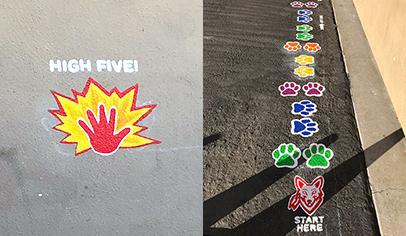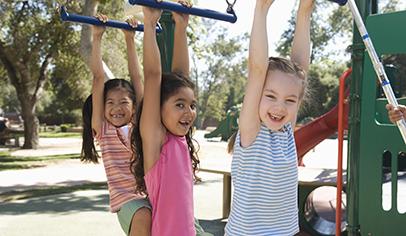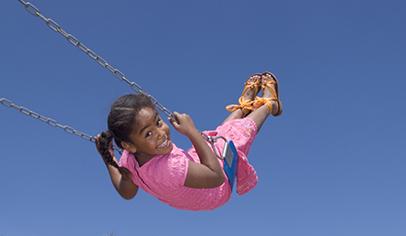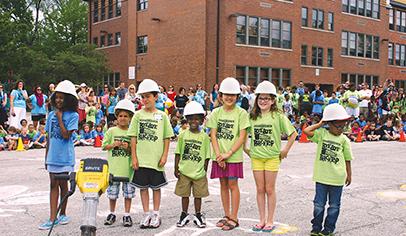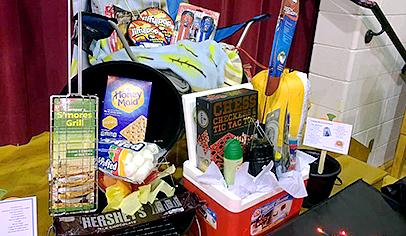Jack Monagle likes to play. He likes to climb, swing, slide, yell, jump, and roll. He's 7 years old. That's what 7-year-olds do—and there's no better place for 7-year-olds than at (or in, or on, or under...) the school playground.
Only sometimes—as Jack's mom, Marthe-Anne Monagle, a PTA member at the Francis School in East Providence, R.I., discovered this summer—7-year-olds fall off playground equipment, and when they do injuries can occur.
Jack's fall resulted in a trip to the emergency room for a broken wrist. Within days, the bright-red cast he wore became almost a badge of honor, signed as it was by his cousins and friends. In a few weeks—thanks to the miraculous recuperative powers of young bones—Jack was as good as new and sliding and jumping and climbing again.
"It was a really bad day," recalls Monagle of the June morning when her son fell. "I was relieved to learn that Jack would be all right."
But his fall could have been worse, and proper safety surfacing—both proper installation and proper upkeep—is a key factor in preventing the most serious of playground injuries. If your school is planning a new playground, safety surface planning should be a key element of your design. If your school has an aging playground, maintaining safety surfaces should not be forgotten.
Helping prevent the most serious injuries
At its most basic, safety surfacing is a cushion that can absorb some of the impact of falls. While grass may be considered soft and comfortable, the dirt just beneath grass is actually quite hard and potentially dangerous. In its place, safety experts recommend surfaces with "give"—most commonly, engineered wood fiber (similar to but longer lasting than wood chips), sand, loose gravel, or rubber matting. At proper depths, safety materials lessen the chances of life-threatening (mainly head) injuries at your playground.
It's important to note that no surface can guarantee safety, especially against orthopedic injuries like broken wrists and ankles. In many cases, these injuries result more from awkward falls than from falls of great height or speed. Government and industry safety standards instead concentrate on the likelihood of life-threatening injuries and measure things like g-forces (acceleration due to gravity) and HIC (head injury criteria) to recommend minimum depth of safety surfacing for particular playgrounds. Safety recommendations are generally based on the maximum height of your playstructure, as the distance a child falls is the most important factor in the g-force and HIC measurements.
There is no single best surface for your playground. Factors like weather, the availability of maintenance staff, and even budgets play a role in that decision. Your local playground representative can certainly guide you carefully through the process, and the U.S. Consumer Product Safety Commission also has information on its site.
"In choosing appropriate protective surfaces, you should take a look at the long-term issues involved and not make decisions on today's costs alone," recommends Rick Henke, president of Goric Marketing, a playground distributor in Holliston, Mass. "Original costs must be weighed against the life-cycle maintenance costs of the different surface materials available. Factors to include: resiliency, wheelchair accessibility, heat absorbency, and even reaction to frost, especially in the North."
While playgrounds offer hundreds of options for the shopping PTO—slides, swings, ladders, colors—playground surfacing is much more basic, and perhaps much more important. A few minutes spent thinking about safety surfacing can help ensure that Jack and others like him enjoy years and years of safe fun.












